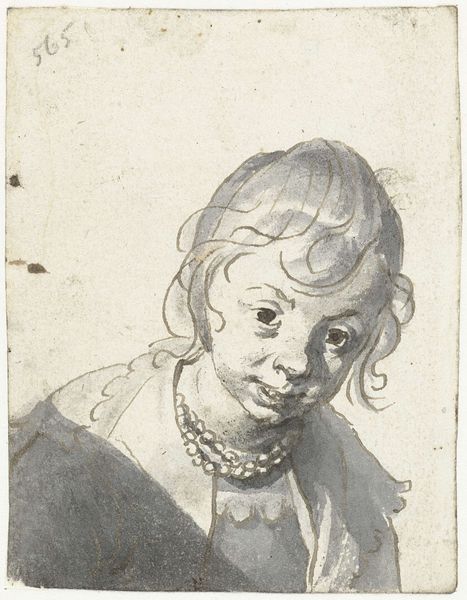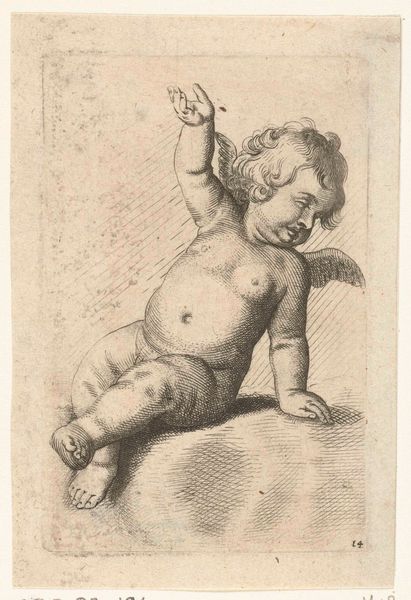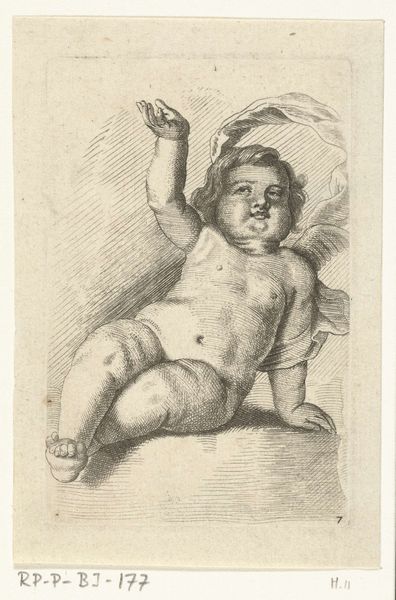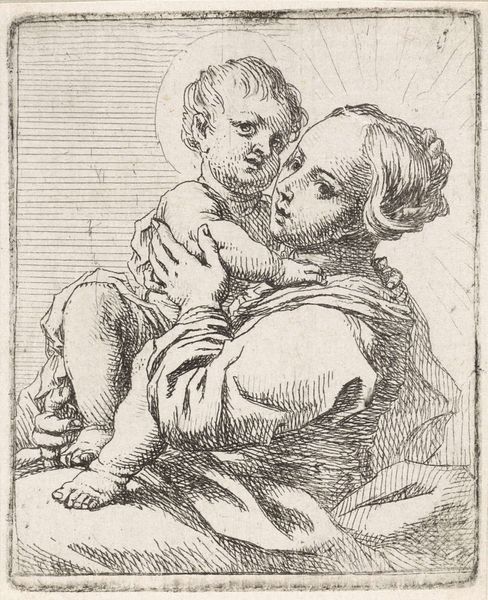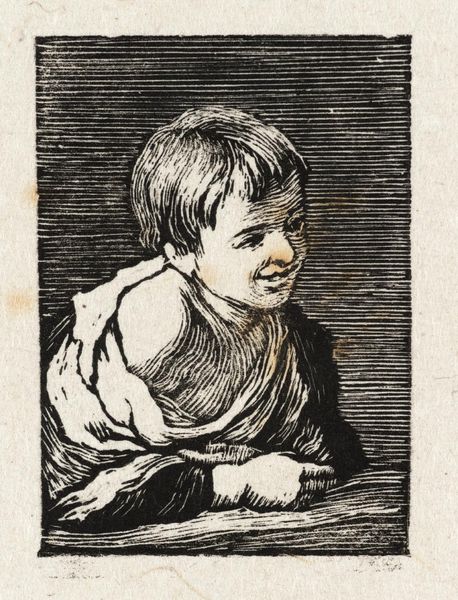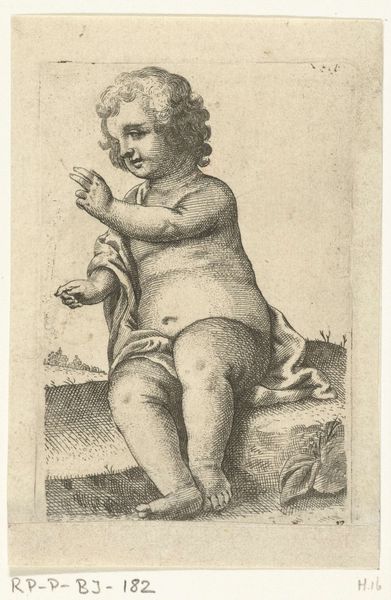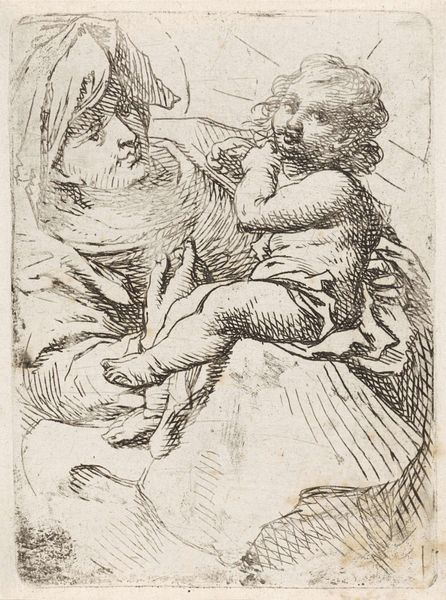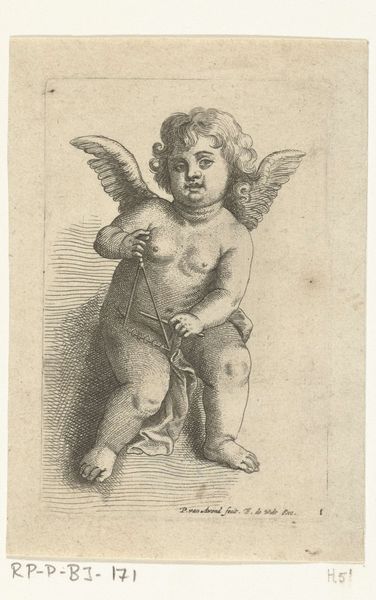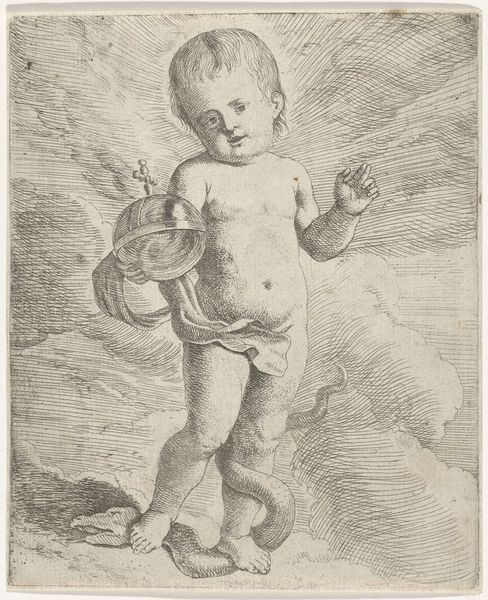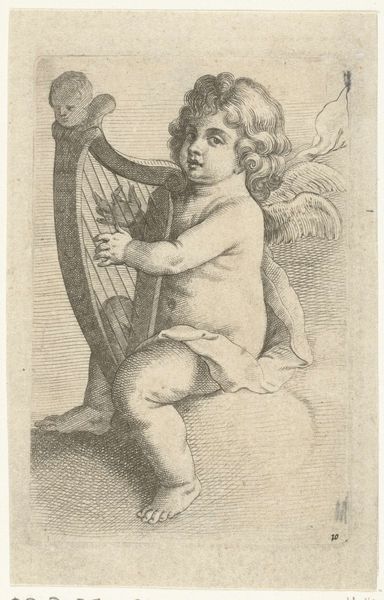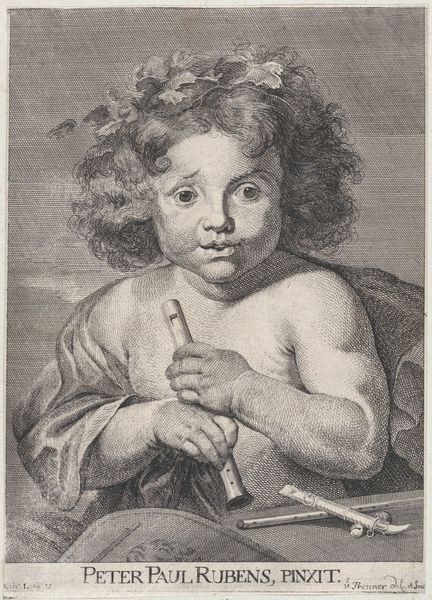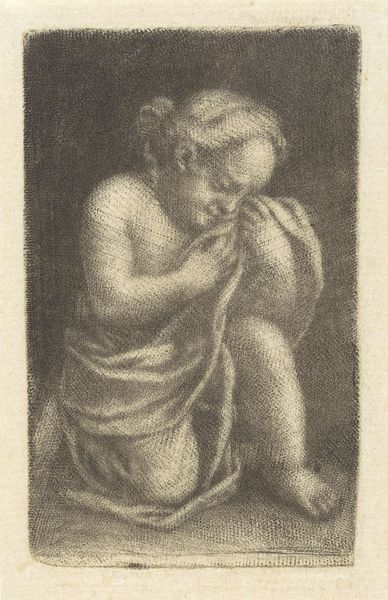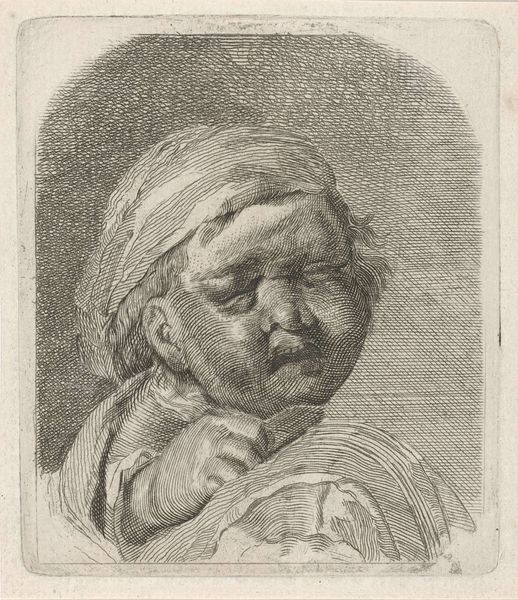
print, engraving
#
portrait
# print
#
figuration
#
portrait reference
#
portrait drawing
#
engraving
#
realism
Dimensions: height 90 mm, width 56 mm
Copyright: Rijks Museum: Open Domain
Curator: What a delicate work. We're looking at an engraving entitled "Borstbeeld van een engel" or "Bust of an Angel," created sometime between 1831 and 1904 by Arnoud Schaepkens. Editor: Immediately, I’m struck by its melancholic mood. The angel's gaze is averted, and there's a tangible sense of pensiveness, wouldn’t you agree? Curator: Yes, the averted gaze is crucial. During this period, the religious function of such imagery had largely been overtaken by sentiment. Consider the market; inexpensive engravings were popular amongst the rising middle class seeking affordable art that conveyed emotion, rather than specifically religious doctrine. Editor: The symbolic weight is still potent, though. Angels have always served as intermediaries, messengers between worlds. This averted gaze suggests a contemplation of the earthly realm, a sorrowful awareness. His hand gestures appear childlike; is he grasping at something, or just fidgeting? Curator: Fidgeting perhaps touches on the broader societal view of childhood. Schaepkens' portrayal seems less about divinely-ordained innocence and more about observing childhood emotions, giving importance to the inner lives of children. It ties into changing pedagogies and theories surrounding development during the period. Editor: I see it. But what of the wings? Are they perfunctory additions to meet the ‘angel’ billing, or do they attempt to express, beyond mere representation, the yearning to be free of gravity and burden? Even rendered so simply in this print? Curator: The presence of wings firmly roots it in a religious visual vocabulary, vital for a print intended for broad circulation, particularly at a time when the church held considerable political power, whether artists directly agreed with it, or not. Editor: So the piece occupies an intriguing space—reflecting both personal and wider socio-cultural influences. Curator: Precisely. It is a reflection of the human condition within specific historical circumstances, viewed through the lens of a seemingly spiritual subject. Editor: It shifts the focus of an idealized angel to become this almost portrait-like study of humanity in repose... or unrest, in a particular time. It certainly offers much more than just a pious sentiment.
Comments
No comments
Be the first to comment and join the conversation on the ultimate creative platform.
